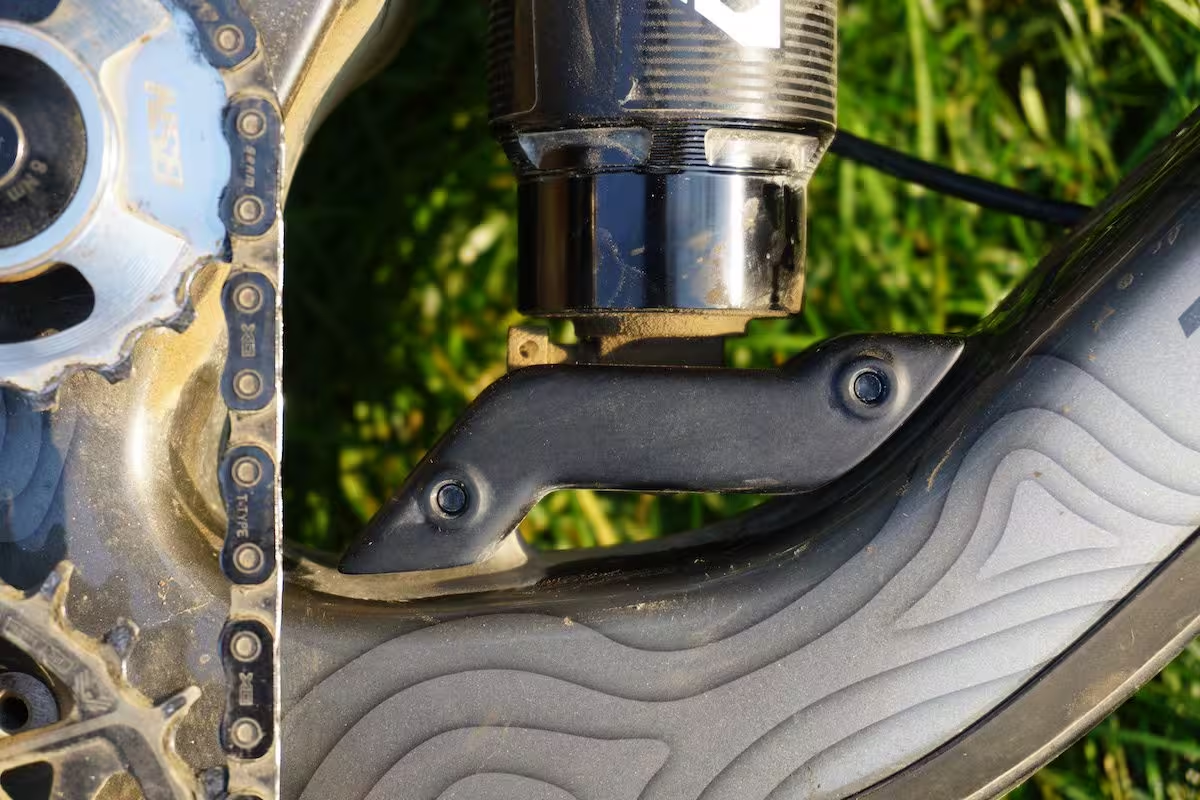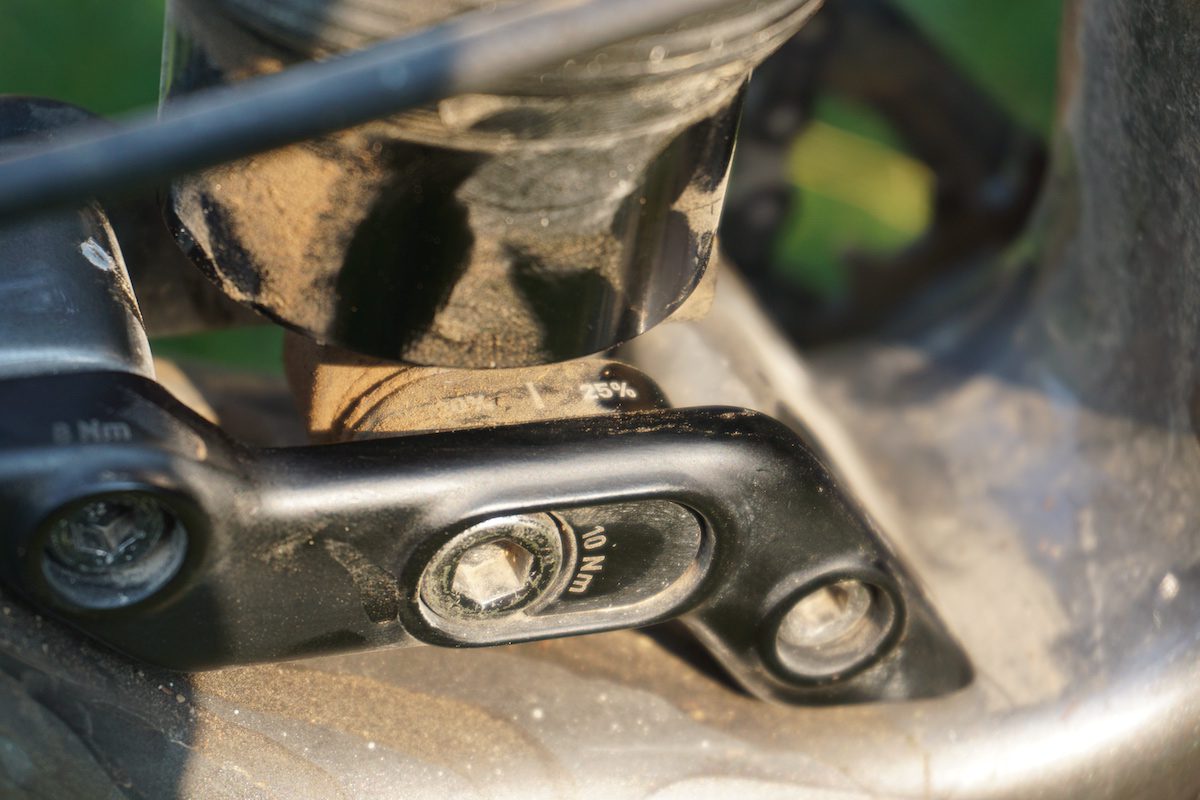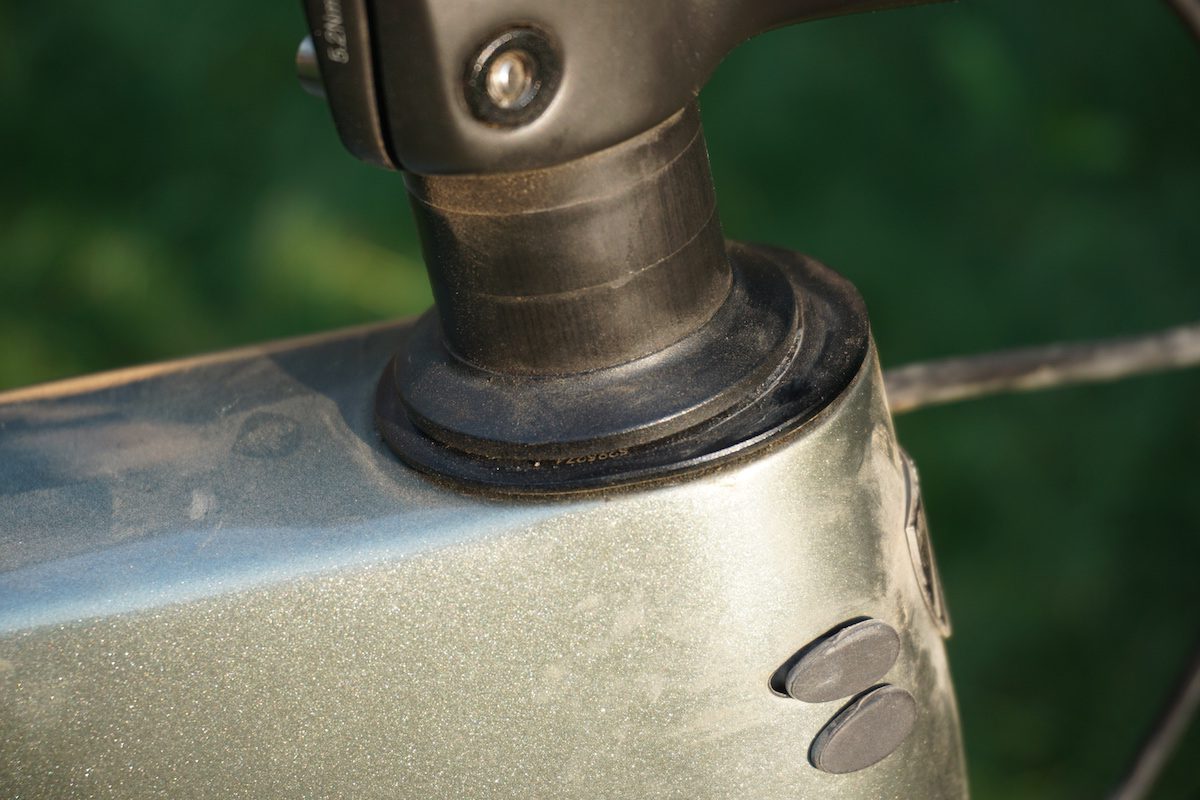When Trek introduced the sixth generation Slash, it included a swath of possible adjustments to personalize the big high pivot bike or tailor it to your specific riding needs.
There’s no longer a Mino Link but there is a flip-chip to change shock progression. There’s also the option to run matching 29″ wheels instead of the mixed 27.5″/29″ (except for size small, which is 27.5″ front and rear only). And, finally, there’s an angle-adjust headset to make the Slash’s head tube angle one degree slacker or steeper.
Since these all, except for the progression flip-chip, require additional purchases on top of buying a new Slash, we’re reviewing them separately from our long-term review of the bike itself.
Parts and accessories sold separately
As mentioned, the parts needed to make all the changes Trek promises are sold separately from the bike itself. They’re not expensive, particularly. But the headset does require some tools (or a shop) to install.
To convert the Slash to 29″ matched wheels, it’s $54 for the lower shock mount brackets. This doesn’t work with the size small frame, which ships with matching 27.5″ wheels. It also requires removing the integrated rear fender from sizes M-XL frames. And you need your own 29″ wheel, the price of which is up to you.
Changing the head tube angle is a bit more involved. It’s $52 each for angle-adjust headset cup. But you need two (upper and lower), so that’s $104 to unlock this feature. And, unlike some other press-in options from other brands, you need a tool to install these cups.
The progression flip-chip is included stock and still works if you do switch to 29″ wheels.
Slack vs steep? Or just neutral?
The headset cups offer a separate or, as I’ll get into below, complementary change to the wheel size options. The +/- 1 degree angle cups give Trek a effective head tube angle range of 62.6-deg (MX, slack) to 64.3 (29″, steep).
There are theoretically six options, three per wheel size. But practically, I found the options were more limited. In MX mode, the angle set gives you a nice range from slack for super steep trails to slightly steeper for slower, more technical riding. The neutral setting in MX mode is already very good, though. In 29″ mode, I could only really feel comfortable with the headset in the slackest setting. Maybe this is different for other sizes or a matter of personal preference but, for the XL, the rest felt off. It’s still good that Trek…
Click Here to Read the Full Original Article at Canadian Cycling Magazine…



